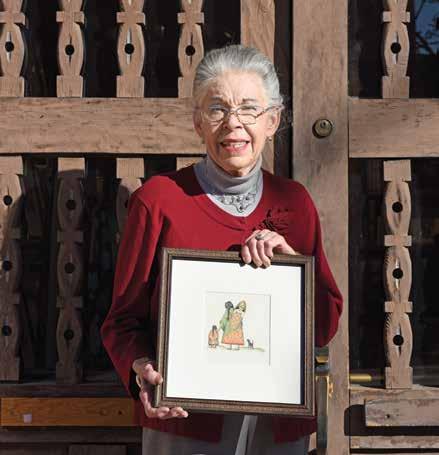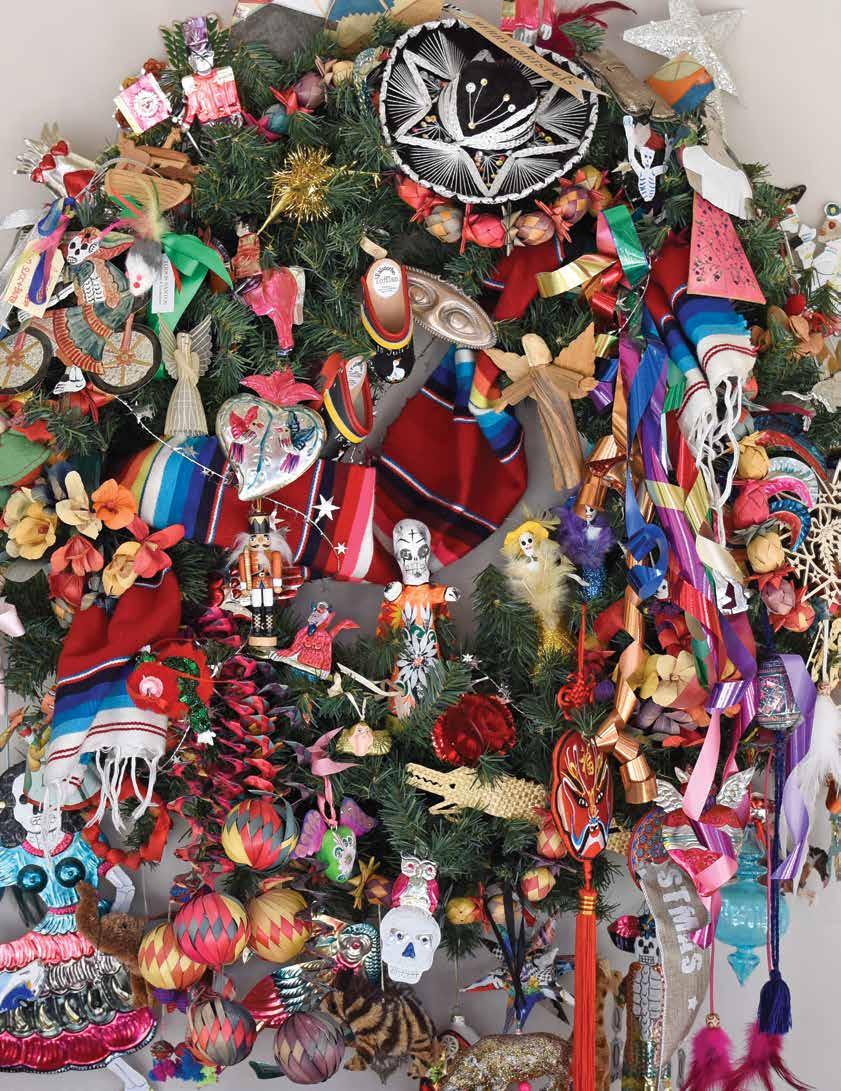
4 minute read
OFFICE OF ARCHAEOLOGICAL STUDIES
Dog Days of Archaeology
The Vladem Contemporary Site
Before construction began on the future Vladem Contemporary art museum site, the Office of Archaeological Studies did not turn up many earth-shattering discoveries.
Nonetheless, field director Susan Moga and her crew made a few interesting finds in the course of test excavations around the former Joseph F. Halpin Building—including a mummified dog who met an unexpected end in the 1960s.
Field director Moga calls the dog “a highlight of my year,” referring to both the surprising and relatively mundane nature of the find. The tame results of the archaeological investigation meant that the staff’s preliminary research was sound. The Vladem project, a second museum location for the New Mexico Museum of Art, was cleared to move forward.
Office director Eric Blinman discussed the project in a fall 2020 Museum of New Mexico Foundation member lecture, “Conversation with the Archaeologists: Discoveries at the Vladem Contemporary.” The presentation can be viewed at museumfoundation.org/ online-event-recordings/.
“Everyone within the Department of Cultural Affairs and the Foundation has breathed a tremendous sigh of relief that Susan and her crew found nothing spectacular, and nothing that we really didn’t know had existed prior to our doing the historic research in the area,” Blinman says.
The new museum is being constructed around the skeleton of the 1960 Halpin Building, whose structure is informed by the 1921 Charles Ilfeld & Company Warehouse. At some point during the warehouse’s renovation to the state records archives, Blinman recounts, “A small dachshund appears to have stumbled into the area, died, and became mummified in the debris. It had a rabies tag from 1962-1963.” Local veterinary records dating to the era have only recently been destroyed, so it is impossible to know who owned the dachshund.
Blinman excitedly calls one excavation in the north parking lot “some of the most beautiful, even, layer-cake stratigraphy any of us have ever seen in our lives.”
Those layers clearly delineate a general history of the site, the very bottom consisting of compact alluvial deposits with caliche mud. Atop those are early Railyard-era features that reveal 1880s construction clues, including the toothmarks of a backhoe that most likely eliminated any Spanish Colonial ground surface. Roof tiles from the construction of the original 1909 depot, which still stands beside the museum site, were also found, along with remnants from the Capital Coal Company.
Other discoveries include rotten wooden railroad ties from the famed Chili Line Railroad, which discontinued active use in 1941, and chunks of metal alloy that appear to be raw material for a one-time foundry operation in the Santa Fe area.
Blinman says the Ilfeld Warehouse has “really good bones,” upon which to build the new museum.
“It’s ironic that it’s known to us as the Halpin Building, and very few people know it as the more historically important Ilfeld Warehouse,” he continues. “What makes it special is the solid design and construction work by Gordon Street and the contractor’s crew. They created a strong building with great potential for several reuses.”
To support the Office of Archaeological Studies, contact Lauren Paige at Lauren@museumfoundation.org or 505.982.2282.

The Vladem Contemporary Site: A Timeline
Spanish Colonial through early Territorial
The area was part of the pastoral and agricultural neighborhood of households living along Agua Fria Street, with fields and gardens watered by a nearby acequia. 1880 Railroad arrives in Santa Fe and speculators begin buying nearby land to subdivide and sell commercial and residential lots.
1885 Lot remains open, but the area is used to store coal and other railroad supplies. 1909 Santa Fe Depot is built next to site. Coal storage continues as principal use of the property. 1921 Charles Ilfeld, one of the state’s most prominent retailers, purchases the site and constructs the Charles Ilfeld & Company Warehouse at 404 Montezuma Ave. 1960 State of New Mexico acquires Ilfeld Warehouse and begins renovating the building for use by Records and Archives, including storage and office spaces. 1962-63 A dachshund wanders into an Ilfeld-era mechanic’s pit hidden by the renovations and dies. 1980 Artist Gilberto Guzmán creates Multi-Cultural, a mural celebrating the Indo-Hispano heritage of Santa Fe, which is painted on the north side of the building. 1987 Building is dedicated to Joseph F. Halpin (1918-1985), the state’s first records administrator.
1998 Records and Archives moves to new (current) building at the New Mexico State Library.
1998-2004 Halpin Building is used for temporary state offices and storage.
2004 The building is leased by the Museum of New Mexico as storage space for New Mexico History Museum artifacts. After La Villa Rivera building (now the Drury Hotel) is flooded, it is also used for emergency storage of Museum of Indian Arts and Culture archaeological collections.
2007 Office of Archaeological Studies takes up temporary residence in Halpin Building along with the archaeological collections.
2011-12 Office of Archaeological Studies begins moving to the new Center for New Mexico Archaeology, closely followed by the Museum of Indian Arts and Culture archaeological collections.
2016 Halpin Building is designated for expansion to house a second location for the New Mexico Museum of Art, initiating the Vladem Contemporary development.
Opposite: Along with abundant coal debris, layers under the south parking lot at the Vladem Contemporary site yielded small chunks of a copper metal alloy that appear to have been destined for a foundry before being spilled on the Railyard grounds. Photo © Susan Moga. Above: Staff, donors, trustees, and other advocates and supporters from the State of New Mexico, Museum of New Mexico system and Museum of New Mexico Foundation broke ground on the future site of the Vladem Contemporary last fall. Photo © Saro Calewarts.










